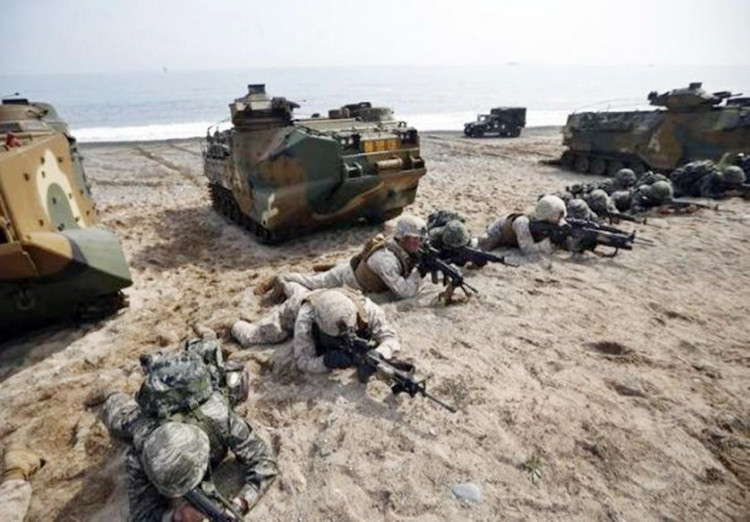The U.S. Marine Corps is reorganizing its fighting units and adding a new warship class in the event it invades Chinese-held islands within the First Island Chain should push comes to shove in the next few decades.
New warfighting concepts that address a potential conflict in the western Pacific against China include establishing a "stand-in force" that will require "smaller, more lethal, and more risk-worthy platforms."
This means building a fleet of new but small ships capable of operating forward, within the arc of an enemy's long-range precision fires. The Marines conclude a small amphibious ship fits its new warfighting concepts.
They now have a name for this new warship class: Light Amphibious Warship of LAW.
The stand-in force that will be deployed to enemy-held Pacific islands by LAWs will be the new Marine littoral regiments. The regiments will include infantry, logistics, and anti-air personnel. The first littoral Marine regiment is being tested in Hawaii.
Marine Corps Commandant Gen. David Berger said increasing threats in the Pacific and elsewhere are driving the need for a new fleet of less expensive ships that can be built quickly.
"We need a light amphibious warship -- a lot of them," said Berger earlier this year.
LAW is being designed as a fast and survivable combat transport capable of transiting China's heavily defended First Island Chain.
This Chinese term refers to a series of archipelagos extending out from the East Asian continental mainland coast. It consists of the Kuril Islands in northern Japan, the Japanese archipelago, the Ryukyu Islands, Taiwan, the Philippines, and Borneo.
The new Navy shipbuilding plan released this week calls for building 10 LAWs that can transport up to 75 combat-ready Marines and all their equipment. LAWs will operate independently of the amphibious ready groups (ARGs) with which Marine expeditionary units (MEUs) typically deploy.
A LAW will be 200 feet long and able to operate at 14 knots for a minimum of 3,500 nautical miles. The ships should be capable of "enduring up to several weeks-long deployments and trans-oceanic transits," according to Navy specs. More importantly, an LAW can travel longer distances than an existing landing craft.
"Forward-deployed (in U.S. Indo-Pacific Command) and ready to fight tonight is kind of the key," said a top Marine official of LAWs.
The Navy's shipbuilding plan calls for spending $1.5 billion between 2022 and 2026 to build 10 LAWs. A Marine officer described LAWs as "the missing piece" between the Navy's amphibious assault ships and ship-to-shore connectors.






